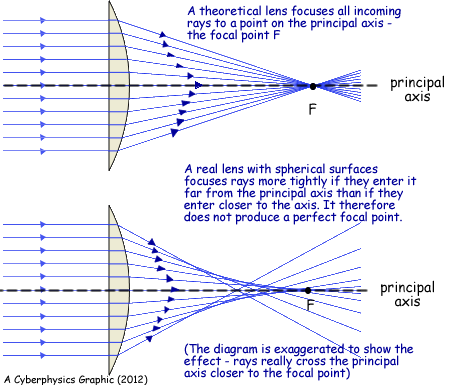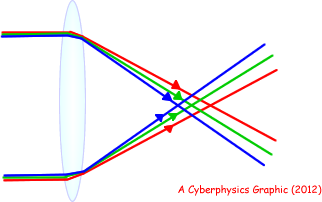Optical Aberration
An aberration is a term that describes anything that deviates from the normal.
In optics there are two forms of this that you should be aware of:
 Spherical aberration, which occurs when light rays strike a lens or mirror near its edge.
Spherical aberration, which occurs when light rays strike a lens or mirror near its edge.

The focal point is the point through which rays of light, travelling parallel to and near to the principal axis, pass after refraction by the less (or reflection by the curved mirror). Not all rays are near to the principal axis therefore some do not go through the focal point - especially the ones near to the edge of the mirror or lens (far from its centre - where the principal axis is).
Spherical shapes are much easier (and therefore cheaper) to produce than a perfect aspherical profile and so most lenses have spherical shapes. A sphere lens has no spherical aberration only at a radius that equals the radius of the sphere divided by the index of refraction of the lens material. A typical value of refractive index for crown glass is 1.5, which indicates that only about 43% of the area (67% of diameter) of a spherical lens is producing a point focus.
 Chromatic aberration, which is caused by the difference in refractive index for different wavelengths of light.
Chromatic aberration, which is caused by the difference in refractive index for different wavelengths of light.

Shorter wavelengths of light are refracted more strongly than longer ones (see GCSE notes an dispersion through a prism). This leads to a spreading out of the colours in white light. The above diagram exagerates this effect!


